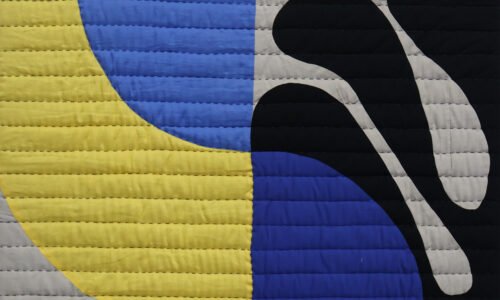Everything Is Shifting—Until We Look
Start
23 March 2024End
20 April 2024Artists
Clarissa Gonzales, Kiko Escora, Marita Ganse, Tof Zapanta
Change—being what seems to be the only constant—is probably one of the most overused paradoxes, probably because it’s also one of the most felt. From the world’s physical climate to our personal, inner seasons, we feel how all bodies eventually give in and move to the rhythm of time.
In Everything Is Shifting—Until We Look, four artists with different mediums of choice come together to “explore memory, the unreliability of it, and the state of constant flux until we decide what (they) want to remember.” The result is a custom curation of pieces that are wildly different in form, but all resonate and share that longing to capture fleeting moments in time in the ways we want to remember them.
In Marita Ganse’s case, the language is tactile. A trained and practiced furrier in Lübeck and Hamburg, Germany, Ganse’s concept is the process itself, in each quilted tapestry. For her, exploring appliqué techniques made it more efficient to move toward organic shapes and patterns, “like letting a small spiral naturally grow into a winding journey through (her) memory.”
The violent and visceral. The sensual and the tragic. Kiko Escora’s acrylic and graphite paintings generally always point to figuration—especially, but not limited to the human figure and portraiture. For Escora, these works are a continuation of that exploration: a “sort of adventure or quest in figuring out our nature as human beings and the things that affect us.” By focusing on the rich details of a human subject, he seemingly captures different poignant stories from a few angles. As a purveyor and participant of culture and art since the 90s, his portraiture and painting style continuously change together with his perception of the world and the things that spin those changes into motion. If Ganse’s concept is in her very process and the way the fabrics are stitched to form her story, Escora’s medium is also his message.
Clarissa Gonzalez uses resin as her primary vessel for exploring color and light. Through her selection of vivid colors, luminous qualities, and “both subtle and stark gradations,” she makes each glance of her pieces a different experience in perception each time. As a motion designer, her works show how much both movement and stillness fuel her works. In the process that stems from fixating on a specific moment until its details blur and only the colors remain, she attempts to “capture fleeting moments of time,” and “render the instance into its most basic and tangible form.”
In Tof Zapanta’s recent painting approach, he “deliberately confuses the realms of essence and perception to engineer his way of processing memory and desire.” His acrylic paintings assert how he chooses to form memories, as triggered by something as seemingly mundane as staring at objects in his studio. By treating the memory of nature and certain perceptible elements within his studio (like texture and color) as “discrete square units of visual memory that can be interchanged between parallel visual planes.” Through this, he “conjures a new way to visualize amidst remembering, and in effect ‘be there’ without being there.”
Through this, he has delved into the idea that he, in fact, does not know what happens outside of his perceptible reality, and that all he sees are from his peripheral vision—only shadows and glimpses of actual events. Having recently read about the concept of the Observer Effect in quantum physics, in which, to put simply, everything is shifting until we look at it. Or that observation changes the state of things (a concept more well-known as a certain famous cat in a certain famous box). This relates very well to his paintings and perhaps painting in general, when the artist begins his work and everything is in a constant state of flux until the decision to record a mark on paper or canvas. Even then, the work still constantly evolves from what the artist has set out to do. In his periphery, he sees that the world is burning, and so it seeps into his world of nature and memory as smoke, from an unobservable origin, and for this series, the square unit of memory remains inside the box.
A box. A piece of soft, yielding fabric. Rearranged furniture and reconfigured lives. Ghosts of past passions, lives, and lovers. Everything shifts and will continue to, in a timeline that only reveals itself to itself. Everything moves until your gaze keeps things still—even if only for a second. Maybe that’s all the time we need.
– Nikki Ignacio and Tof Zapanta














